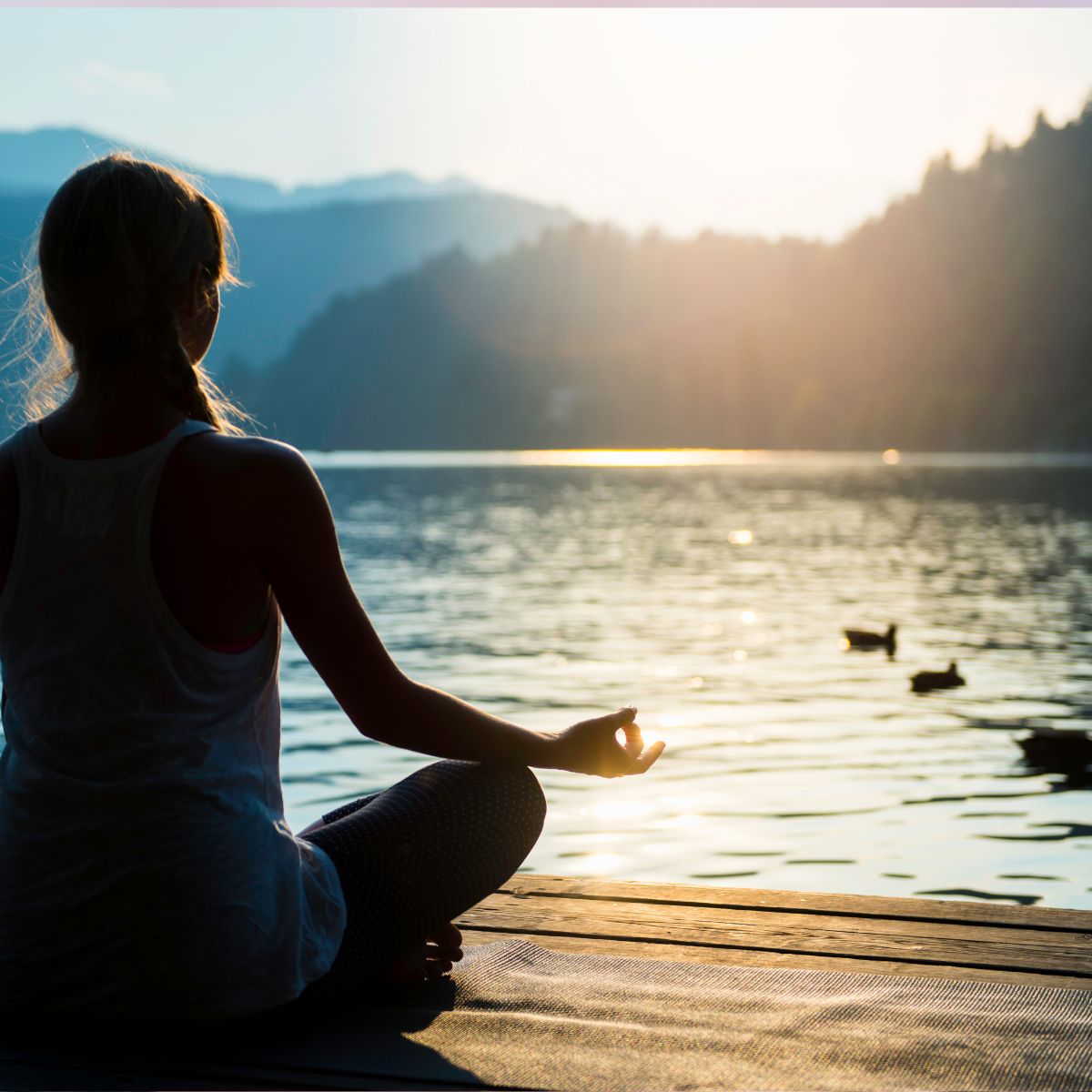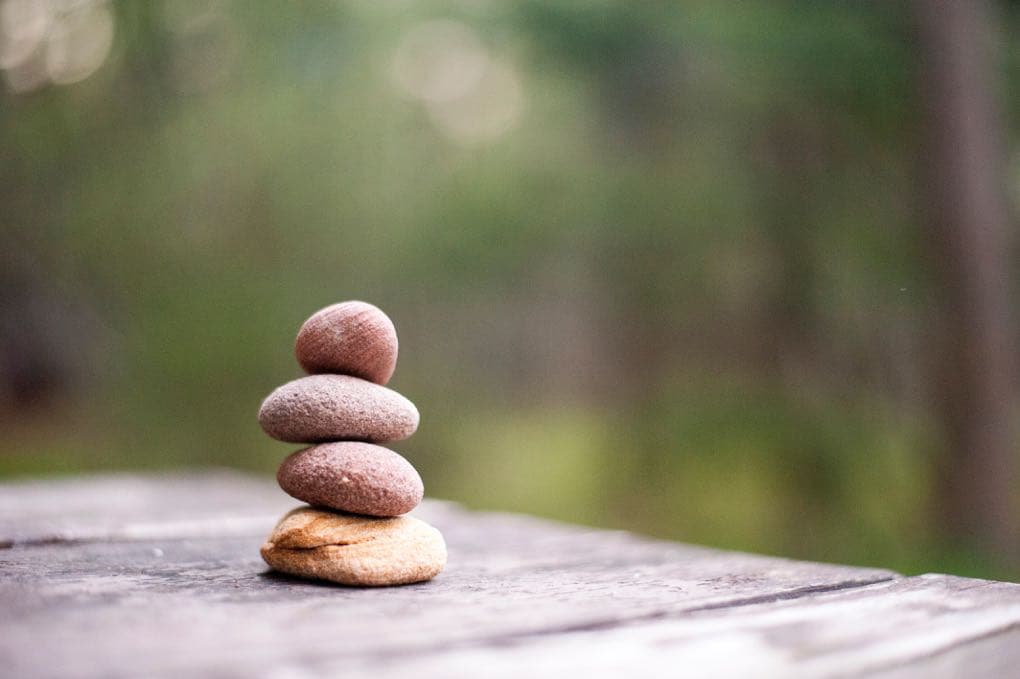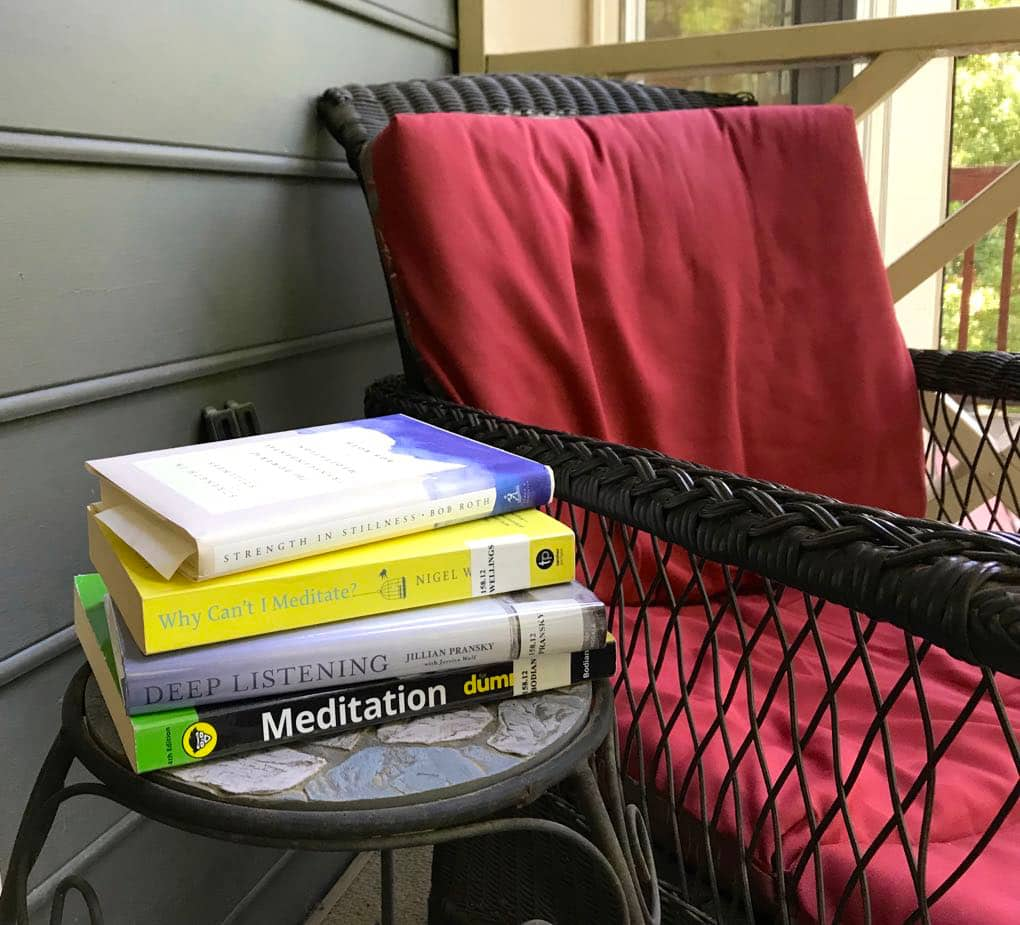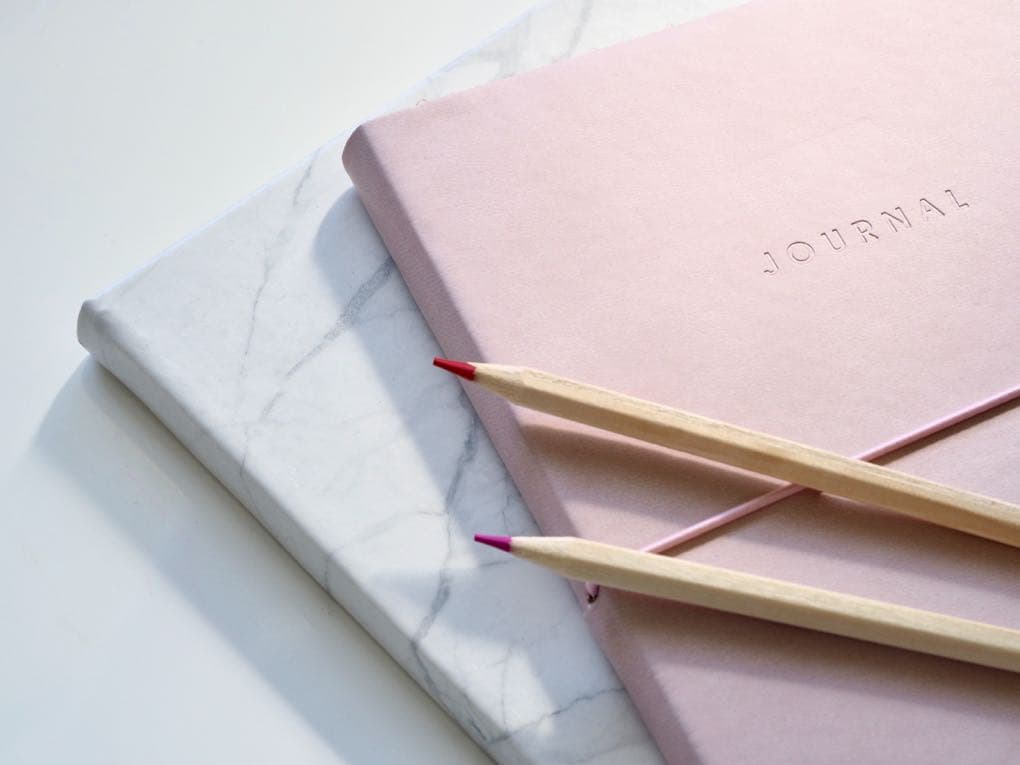Meditation for Beginners: 7 Tips for Getting Started

Why Meditating Isn’t as Hard as You May Think.
The word meditation can conjure up different ideas for different people. Some may picture a peaceful looking person sitting cross legged on top of a mountain with a gorgeous view and brilliant sunrise. Others may picture a comfy looking pillow surrounded by lit candles and burning incense, and still others may think of a monk sitting in isolation or surrounded by other monks. While these are just a few of the images that may come to mind when you think about meditation, none of them, at least in my world, seem very realistic on a regular day to day basis. That’s why we need a special focus on meditation for beginners.
Many people who are interested in learning more about meditation often don’t because they get caught up in the idea that their setting has to be perfect or that they need hours every day to learn how to do it “right.” While it’s fabulous if you do have an ideal setting or plenty of time to go on a retreat, it’s not necessary. Meditation for beginners doesn’t depend on the setting, and to some extent, it doesn’t depend on the length of time you do it. In fact, it’s probably not as hard as you may think. The most important thing is that it’s about what happens inside you.

What is Meditation?
The point of most meditation techniques is not to be some esoteric practice that takes you out of or keeps you distant from what’s going on in the world. Just the opposite. The goal is to give you a more manageable way to be part of what’s going on inside of and around you. That’s what meditation for beginners is all about.
Laura Irwin is a meditation coach and wellness writer at Inspired Meditations. She acknowledges that meditation works differently for everyone. “If I have someone who is religious, they may relate it to prayer.” But, she adds, if someone doesn’t want to think of it in spiritual terms, that’s perfectly fine. It can be a form of personal growth through “taking time for yourself, mindfulness in the present moment, self-reflection or deep relaxation.”

Ways Meditation Can Help in Real Life
There are a number of ways meditation can help in everyday life. Laura says the overarching theme that she’s experienced herself and that her clients have expressed is the ability to “see things from a bigger perspective.” In other words, being able to take a step back or pause before reacting. This pause lets you take a broader view of what’s going on and what you want your response to be. It doesn’t keep you insulated or distanced from the situation, but it helps to keep you from becoming swept under by the hectic, seemingly out-of-control current that is often our daily lives. It offers a calmness in the middle of the crazy that lets you prioritize and put things in perspective.
Because of this enhanced calmness and clarity, meditation can also help with insomnia, anxiety and depression. Laura says that it allows people to recognize that, “I’m sad right now, but this isn’t going to last forever. Or, I’m anxious right now, but this is only going to be for a half hour or maybe a couple of days.”

Primary Types of Meditation
Depending on who you talk to, the number of various meditation techniques can be numerous or boiled down to a few similar concepts. Since it can be fairly overwhelming (see the stack of books I am now reading on the subject), Laura helped to break meditation for beginners down to some of the basic techniques.
- Guided meditation. In this type of meditation, either a recording or teacher guides you into a state of deep relaxation through positive suggestions and affirmations. The primary benefit is that you don’t have to listen to your mind because you’re more focused on what someone else is saying. They can be done in person with a teacher or many are available as digital downloads or on apps. Laura offers numerous free guided meditations at Inspired Meditations and says this form of meditation is “the best way to achieve optimal relaxation, relieve stress naturally and eliminate bad habits while creating new, positive behaviors and mindsets.”
- Mindfulness meditation. This technique focuses on your breath and following it as it goes in and out. As your mind wanders, you gently return it back to your breath. This helps to bring focus to the present moment, but it also allows you to monitor your thoughts and experience and just simply let things pass by without judgment.
- Movement meditation. Some examples of this include certain types of yoga (such as Kundalini), Tai Chi, Qi Gong, walking, gratitude stretching, dancing and self-massage. Laura says the movements should be slow and involve the whole body. There should be no gadgets or fitness goals involved. Click here for more on what Laura has to say about movement meditation.
- Loving Kindness Meditation. This type of meditation offers care and consideration for yourself and for others. Some of the general phrases that are used include, “May I be happy, may I be healthy, may I be patient” and so on. Then you turn it around to others, whether you like them or not. “May you be happy, may you be healthy and may you be patient.” Laura says this type of meditation has been described as friendliness toward yourself and others.
- Transcendental Meditation. This technique uses a mantra to help you get focused and to ultimately transcend “the noise” of your thoughts and what’s going on around you. Note: this type of meditation requires a teacher and can be fairly expensive to learn. Obviously, that cost could be offset when you compare it to the cost of potential medical issues that may arise that could be prevented with the help of meditation, but it’s definitely something to be aware of. Click here to find out more about Transcendental Meditation.
- Mantra meditation. This type of meditation uses the vibrations of mantras and sounds to connect the mind and the body. One phrase that Laura learned was, “Every day in every way, I’m getting better and better.” And of course, we’re all familiar with the Sanskrit om. The purpose of using a mantra meditation is to focus fully on the sound or phrase as you’re saying it, which will ultimately take you to a different level of awareness. Click here for a great article on mantra meditation.

Meditation for Beginners: Getting Started
What’s the best way to get started with meditation? Laura has these suggestions.
- Choose a time that works for you. Many people find that meditating in the morning is a good way to get their mind ready for the day, but for others, mornings are simply too busy. If that’s the case, consider meditating at night or during the middle of the day if you have the opportunity.
- Have a goal. Whether it’s to wean yourself off anxiety medication or to improve your performance at work, having a goal helps to keep you focused on the outcomes you want.
- Go to a class. While you don’t have to have a teacher to meditate, it can be helpful and a quick way to see results to have someone else guiding you through the process. It also offers a level of accountability and someone else to ask reflective questions that help you track your progress.
- Alternate days. Laura encourages alternating the days that you meditate so that you can do it one day and reflect on your experience and any changes that are happening the next.
- Guided meditations. Laura says these tend to have the most noticeable effect and are the biggest bang for your meditating buck right away. If you want to see results fast, you should definitely consider guided meditations.
- Invest your time in it. While Laura doesn’t believe that meditation should have to take hours, she is an advocate for putting into it what we want to get out. She says that 20 minutes for each main session is a good amount of time to reap the benefits. If you want to add in 5-minute sessions at other times during the day, you’ll get that much more out of it.
- Keep a meditation journal. After each month, write down what’s happened or hasn’t happened. Notice things like whether your relationships are changing, if you’re being more productive at work and if your mind is calming down. Be patient with the process, but if you don’t start to notice changes after a few months, you may want to evaluate whether you should meditate more or differently.
My Experience with Meditation
While I can’t say that I formally meditate every day, I do try to begin the day by quietening my overactive mind in one way or another. By doing this, I’ve noticed a big difference in my overall mindset and to some degree in the way I’m able to handle stressful situations. I’ve still got a long way to go though and would like to have a more regular practice that I could rely on to help quiet my brain more and to help me sleep through the night. That’s why I’m starting my own meditation experiment and will be sharing what I learn with you along the way. Real health is recognizing that our nutrition, health and wellness are all connected, and from what I’ve seen so far, I believe that meditation is a key component of that. I hope what I find benefits us all.
Lean on Your Community
Do you have a regular meditation practice? If so, please share what it is and how it benefits you in the comments section below or over on the Peppermint Tea & Me Facebook page.







Thank you for giving credit where credit was due! 🙂 Enjoying your blog!
Of course! and thank you for your wonderful photo!